 In 1993, when my first book came out and before he died, David Sandler called to buy out my Buying Facilitation® model. We couldn’t agree on terms, but he was excited by my differentiation between the sales model and the buying process: “I recognized that the problem was on the buy side, and thought my Sandler method was thinking out of the box. Reading your stuff, I now recognize my focus is still on getting solutions sold,” he said. “I hadn’t realized that ‘outside the box’ meant to shift the focus first to facilitate buying. Well done.”
In 1993, when my first book came out and before he died, David Sandler called to buy out my Buying Facilitation® model. We couldn’t agree on terms, but he was excited by my differentiation between the sales model and the buying process: “I recognized that the problem was on the buy side, and thought my Sandler method was thinking out of the box. Reading your stuff, I now recognize my focus is still on getting solutions sold,” he said. “I hadn’t realized that ‘outside the box’ meant to shift the focus first to facilitate buying. Well done.”
And yet, after all these years, the problem remains: we’re limiting success and wasting an untold amount of resource seeking those few who are ready, willing, and able to buy: we’re missing a much larger, untapped market of potential (but real) buyers we ignore because our sales outreach doesn’t affect them. By broadening the goal to include facilitating change with those in the process of becoming buyers, by recognizing that a buying decision is a systemic, change management issue before it’s a solution choice problem, it’s feasible to engage earlier (albeit in a different way) and find a much larger population of real buyers.
HOW SALES RESTRICTS SELLING
The sales industry has a singular goal of placing solutions. It’s an industry with solutions looking for a problem. And the paltry results of a 5% close rate have been baked into the system: you accept low closing ratios as the best you can do, hire more sales people than you need, suffer from a sales cycle that is months/years longer than necessary, and lose buyers that will need your solution but don’t yet need or notice the information you provide.
Have you never asked yourself why, with all the capability of finding prospective buyers at your fingertips, you still close only 5% – down from 7% a decade ago (and with much less technology)? And why you continue to waste untold bazillions on staff, technology, and time, chasing folks who will never buy. Have you not recognized that
-
the people you target aren’t necessarily buying or buyers,
-
you’re expending too much resource on those who will never buy,
-
you don’t know the difference between those who will and those who won’t buy?
With the best technology available, the most professional branding and marketing, great content, and a good solid product, you’re losing far more sales than you need to. This much should be obvious: No matter how much new technology, or how many sales methods available to you – regardless of all the ‘new new’ things at your fingertips – you’re still merely closing the low hanging fruit (those 5% who have determined they are ready, willing, able to buy).
A buying decision is a change management problem before it’s a solution choice issue. By adding a few bells and whistles to your sales efforts you can find people who will be buying but aren’t yet buyers and facilitate their strategic Pre-Sales, non-solution-based decision path that concludes with them buying. Then you’ll close far more than you’re closing now with half the staff and half the time. But it needs different thinking.
SELLING VS BUYING
People become buyers only when there are no other options and a purchase is their last hope for problem resolution. They can’t even accurately define a ‘need’ until the full complement of stakeholders are involved and the scope of any resultant change is recognized. Sales ignores this group because their touch points are different and they are definitely not yet buyers. Yet it’s here they’re more open for support and connection: their path to congruently resolving a problem is confounding; they may forget to bring in “Joe from accounting”, or can’t recognize the full scope of issues until they’ve falsely started down one path to resolution and must start all over.
You’re a subject matter expert in the area of their problem resolution and could really be a support here – so long as you avoid trying to sell and focus on facilitating change first. This is where they will be eager to connect. By only focusing on selling/placing your solution, you ignore 40% of real buyers who haven’t gotten there yet but will.
Ask yourself this: Do you want to sell – or have someone buy? They are two different activities with different rules, needs, and behaviors. Sales is tactical. Buying is strategic. Your tactical focus on placing solutions with Buyer Personas, Opportunity Management, content differentiation, and yes, even Sandler, SPIN etc. offer biased questions and content focused on those few who have defined, and understand, their need and change issues, overlooking those people in the midst of strategic decision efforts who will develop into buyers once they get their ducks in a row. Sellers actually sit and wait while prospects do this anyway. Why not help them! Here what sales ignores:
-
A buying decision includes a 13 step change management process, the first 9 steps of which are systemic change (not purchase or need) focused; they aren’t ‘buyers’ until step 10 when all of their systemic/change management stuff is worked out, and there is agreement that a purchase is their only option.
-
A problem doesn’t equal a need; a ‘need’ doesn’t equal a purchase. It might turn out that maintaining the status quo is a better option for them; as an outsider, you can never understand why.
-
People aren’t buyers until they’re out of options to fix their problems themselves AND they’ve gotten buy-in to bring in a ‘foreign’ element. The last thing they want to do (precisely, the last thing) is to buy anything. The buyers you seek/find are already at the end of their decision path.
-
Your terrific content isn’t being noticed by people who haven’t yet determined, defined, agreed upon a ‘need’ even though they may become buyers later, or even really need your solution.
-
Your content/selling push assumes that with the right content and message, offered to the right demographic, at the right time, focused on the right need -> purchase scenario, you’ll get in/close – but you’re only reaching those few who are ready OR those in the midst of their research (who may never buy but may call you with questions or take an appointment). They won’t even read or heed your outreach.
-
You’re using a ‘need’ and ‘solution-placement’ filter which restricts your results 95% of the time, causing you (beyond all logic) to push push push push harder or better, against a closed system of people and policies that’s not ready, willing, able to buy.
The problem is not your solution (It’s great. And people can find the content they need on line when they’re ready.); the problem is that the sales model places solutions with people who need them, but does nothing to help facilitate the change elements people traverse en route to becoming buyers and are not buyers yet. Here are the main stages people execute as they seek to resolve a problem (The full set of steps are laid out in my book Dirty Little Secrets: why buyers can’t buy and sellers can’t sell.):
-
Assemble the full set of stakeholders (including “Joe in accounting”) who spend time understanding the scope of the problem, how it got initiated, and how it maintains itself;
-
Once a problem is defined by all stakeholders, the group tries to resolve the issue with familiar resources to minimize fallout. (This is where they might contact you with questions. They’re doing research, not buying.)
-
Once it’s decided to seek an external solution, they must find a route to resolution that maintains Systems Congruence. So if your users refuse new technology, or your teams function well as they are, you might find a way around a purchase if the disruption is too great. An Outsider can never understand the unique nature of internal dynamics. Can I ever really understand why you don’t stop smoking, or stay in a dysfunctional relationship, or stay in a job/relationship that makes you miserable? Change is always personal.
Notice how these stages are change- and systems-focused, and not accessible to Outsiders with a ‘sales’ hat on. And until they are addressed, there’s no ‘need’ and no ‘buyer’. Btw, I developed these stages decades ago; they apply to anyone making a decision including coaching clients, patients, and employees, and all buying situations regardless of the size of the change/purchase. Whether you merely need to buy a new phone, or go through a merger, the steps of change must be traversed in a way that maintains the status quo (even when it’s unconscious) regardless of need. You wait while people do this anyway; why not find those who CAN become buyers (rather than ‘should’), facilitate their change quickly, and be there with them as they buy – and be with them as they figure out their own unique strategies for change – so long as you avoid trying to sell anything as they’re not buyers yet.
Is it sales? No. It’s a Change Facilitation process I call Buying Facilitation®. By first enabling people to facilitate their buying decision path, you’ll have less competition, close more, stop wasting time selling to those who can never buy, and be true Servant Leaders; you can use your technology, your content marketing, your sales efforts as you are now, but with an additional focus.
WHY AREN’T THEY BUYING? SDM ANSWERS YOUR QUESTIONS
Using the above thinking, here’s a ‘Q&A’ to help you better understand why you’re getting the results you’re getting.
What’s wrong with seeking buyers to place our solutions? Isn’t that what sales is?
Sales is perfect for finding and educating buyers with a need, but not for facilitating the buying decision path. There’s a
13 step decision path between recognition of a problem and a purchase. Sales only handles the limited portion (steps 10-13) that occurs once people reach the point where a purchase is their only option AND they have buy in from the full complement of stakeholders for non-disruptive change (step 9) (Think about it. You won’t buy a new car, or a new X, until you’ve tried to fix the one you’ve got, AND you have the funds now, AND your spouse/team agrees, AND you’ll still function as well with the new item.). No Outsider can make these determinations, they’re not based on buying anything, and your content is irrelevant until then.
Why do they keep talking to me if they’re not going to buy?
Until the entire scope of change is understood and integrated, people don’t understand the perimeters of their need (and when you ask biased questions, the flawed answers you receive often cause you to chase those who will never buy). Before becoming buyers, people must recognize that the cost of change (buying) is less than maintaining the status quo: their ‘system’ is sacrosanct. Would you buy a new car if your spouse would divorce you? Would you bring in a new CRM system if half of your user team would quit, or refuse to use it, or until the tech folks have the time to implement? You know you have to go to the gym more, and eat/drink less. You’ve got a need. Have you signed up for the gym? Stopped drinking beer?
Why are we still getting such a low close rate when we’ve got so many terrific tools at our disposal to introduce our features AND find the right demographic?
Because only a small percent of people you focus on are buyers. Until they’re out of other options AND determined they must bring in something from outside AND have all of their internal ducks in a row, AND have buy-in (Buyer Readiness), your tools aren’t recognized.
Why do they keep talking to me if they’re not going to buy?
During their change process, people research all possibilities. Your solution may be one of them; they’re actually using you for reference to report back to their team, or to figure out their own workarounds, or mention to their current vendor. It’s possible to know on the first call who will be a buyer and who is merely seeking data that will never lead to a purchase – but not with a solution-placement focus.
Why don’t buyers realize they need our solution when it seems so obvious?
It’s only ‘obvious’ to you. The best content, the most relevant solution, will be ignored until they reach step 10 when they become buyers.
Why is the sales cycle so long when there is a solid need/solution match?
The time people take to figure out how to manage change congruently is the length of the sales cycle. As Outsiders, we can never understand the depth of the change management issues: Who is fighting with who? What is the tech schedule? Who will need to be let go? How do internal politics show up? How does their history/future factor in?
The system that holds the problem in place is much more powerful than any solution you can offer. They need buy-in from EVERYONE and EVERYTHING that created the status quo and will touch the new solution. You’ll never recognize “Joe from accounting” who is an unsung influencer, or the fight going on between the sales and marketing folks who need to share budget. It’s not about their need – until it is. And they can’t tell you because they don’t know, or they won’t have found the nut of the problem yet, or you’re asking the wrong questions biased by your need to sell.
Why do buyers make promises they don’t keep? Are all buyers liars?
Buyers don’t lie. The one person you’re speaking with is responding to your biased questions, getting out of the thrust of your sales push, and is giving you the best data they’re willing to give you, or as much data as they have at that point in their 13 step change path. Whatever data they offer is limited by their access to the full Buying Decision Team, and the stage they’re at in their change management. You are, after all, strangers approaching them with a solution placement hat on, asking the wrong questions to the wrong people at the wrong time. As an Outsider you can never, ever have a clue as per the political, personal, strategic decision issues they face. But you can understand they system they decide in, a per your expertise in your field.
Why isn’t our great content being read or acted upon by the larger audience who really needs it?
Needs it according to who? Your research? Your biased questions? Your focus on placing solutions limits your audience and keeps you from getting into the decision path earlier. Are they at the point of seeking workarounds? Is there a team buy-in problem? Have they forgotten to assemble some of the appropriate stakeholders? Are they finding a glitch (political, personal, management-based, etc.)? Your sales, marketing, content, and technology restricts your target market to the low hanging fruit who have clearly defined their need, know they cannot fix their own problem, and have a route to congruent change.
When I gather info about a need, and it seems obvious there is one, what am I missing?
You’re merely asking biased questions to elicit the data YOU want to elicit from one person or a few research visits to your site, to find people who SEEM like they have a ‘need’ and spend a lot of resource chasing after them whether they are real buyers or not. Plus, because someone has a need doesn’t mean they are ready, willing, or able to buy; because the one person on the team you’re speaking with does NOT seem to have a need, doesn’t mean they don’t have one. You’re a solution looking for a problem. Enter first with a Facilitator hat on, help those that CAN/WILL become buyers traverse the route to change, and THEN sell.
It’s not as hard as you think. I developed a new form of unbiased question (Facilitative Question) to facilitate change (part of the Buying Facilitation® process) and pose these down the Pre-Sales steps to help the ‘right’ people become buyers. Here are two examples of responses to a Facilitative Question used on a first call. I bet you can tell which one CAN buy:
SDM: How are you currently adding more tools and capability to your sales team for those times you seek to reach an expanded market?
SALES DIRECTOR #1: I read a couple of sales books annually. If I like them, I’ll pass them on to my sales managers and tell them to get the sellers to read them, and run meetings to discuss their takeaways [Note: this was a real response.]
SALES DIRECTOR #2: I’ve had a helluva time trying to find new tools to use. I’ve tried several, and keep getting the same results. I’d be glad to use something new if I could be assured it was really new, and it would work.
My opening FQ, different for each situaltion, begins by shining a light on the system the person is operating in, and provides an invaluable insight into the state of possible change. It also begins making the person a Coach/Witness to her own status quo by asking for an overview of the system. This particular FQ helps #2 take an unbiased view of how she’s managed change until now. Buying Facilitation® then proceeds down her change steps so she can address each step efficiently, with me by her side. Director #1 had a need, but wasn’t a buyer.
When I form a wonderful relationship with a potential buyer with a need, where does he go? He seems to take calls and stay in touch, and then disappears. Where does he go?
He was never a buyer. He either couldn’t get the buy-in from the Buying Decision Team (BDT), or came up with an alternative solution, or decided not to move forward because the cost of disruption was too high. He stays in touch as long as there is a possibility he needs to buy something (he hasn’t yet gotten team agreement or become a buyer), or so long as the data you’re offering is useful to their ultimate decisions. 80% of our prospective buyers will buy a solution similar to ours within 2 years of our connection. That means they had a need but couldn’t figure out how to congruently manage the change.
When I’m months into a sale, and everything that was going well suddenly stops, where did it go?
See above. The person wasn’t really a buyer yet or the team wasn’t bought-in to change.
Are buyers spending a lot of time trialing and speaking to other providers before they choose us?
Possibly. People research the best alternatives to managing change with the least disruption.
Why aren’t we more successful when we check that they’ve brought in all stakeholders and help them achieve buy in? That’s managing Buyer Readiness, no?
You’re an Outsider. You’ll never understand what’s going on; the questions you pose and the direction you offer are solution placement based; you listen with a biased ear, etc. (Seriously: Read Dirty Little Secrets then call me and I’ll teach you how to do it.) Did they bring in “Joe from accounting”? How are they managing the fight between sales and marketing? Oh – one other big reason: you’re merely speaking with one, at most two, people; you have no reach through the sales model to facilitate change. I can’t say this enough: you’re an Outsider.
If you start as a Neutral Navigator, listen for systems and facilitate them through their OWN decisions with NO BIAS to selling, you can quickly find and serve those who WILL become buyers and help them efficiently manage change. Using Buying Facilitation® KPMG went from a 3 year sales cycle to a 4 month sales cycle with a $50,000,000 solution; Wachovia small business bankers went from a 2% close over 11 months to a 29% close over 3 months; Kaiser went from 110 visits and 18 closed sales to 27 visits and 25 closed sales. By adding BF to their dummy terminals, Barclay’s helped customers define, and buy, the exact solutions they needed. Help them traverse their change path and sell to those who will buy.
Why don’t more people show up at appointments? Why are so many buyers reluctant to take appointments?
-
All of the stakeholders aren’t involved yet so they don’t even have a clear, complete description of ‘need’. Those who take appointments are doing research (and do WHAT? with your content) and haven’t gotten team buy-in, or the full decision team isn’t on board yet;
-
They know from the first moment of a call that you’ll be pushing YOUR solution and not facilitating them in discovering THEIR own solution. It’s only if you can be an asset to them that they’ll be willing to see you.
What’s wrong with trying to place a solution by ‘understanding need’, or creating a need, or selling?
You can do that, for those who are already buyers understand their need.
I’ve paid a fortune for technology, research into demographics, opportunity management software, scripts, and experienced sales folks – but I’m still not closing all I deserve to close. Why?
Because your efforts are focused on ‘buyer’ ‘need’, and neither of those necessarily correlate with buying anything for those who aren’t yet buyers.
How does Buying Facilitation® find, and close, more real buyers?
Buying Facilitation® is a Change Facilitation model that works with sales (and coaching, etc.) and includes Facilitative Questions, Listening for Systems, Presumptive Summaries – wholly different skill sets than sales, and includes no bias. It traverses the first 9 steps of change management, in the ares your solution operates in, beginning with immediately ascertaining who is set up to be able to buy, or has a possibility of systemic change and then teaches them precisely how to discover their path to change. By adding BF you not only find the right buyers, but teach those who may not have been able to buy how to facilitate change.
With Director #1 above, it would take so long to convince him that his plan was flawed, and then get the other managers who have complied with his plan to acceded to change, that it’s not worth the effort. BF progresses down the change steps and teaches them how to bring in the right people, discover if workarounds are worthwhile, and why they haven’t worked until now. Then it helps them determine how change would need to be addressed – and with BF you can do this on the first call. It will ignore the ones who will never buy, and help the real buyers be ready to buy. So much easier than finding those relative few who have already done this. And it’s much easier than it sounds: you’re just not used to it yet.
IN CONCLUSION
Here is a rule: as long as the sales model tries to ‘find buyers’ and ‘place solutions’, you’ll never sell to anyone other than those who have determined they’re buyers, leaving you continuing to push your solution into their closed system. You can
-
discover who is, or will be, starting down the journey that will lead to a decision to purchase something,
-
figure out, with a change management hat on, what the journey in your industry, and among your buying market, looks like (or call me and I’ll help),
-
then enter with those few on their change journey as they quickly (with your help) figure out how to manage stakeholders, buy-in, workarounds, etc. and become buyers.
By adding outreach, vocabulary, content, that first focuses on facilitating the buying decision path earlier you’ll enlarge your range of buyers by 5x. After all, people must do this anyway before becoming buyers; we might as well join them where they are and facilitate the right ones.
Call me. Together, we can create content, software, scripts to find the right ones – those who WILL become buyers – and facilitate them down their decision path toward effective change and buying.
____________
For more reading on the subject, here are some ideas: Practical Decision Making, Questioning Questions, Buyer’s Journey, Do You Want to Sell? Or Have Someone Buy? , Influencers vs Facilitators. Or contact me to discuss. Am happy to share what I know. sharondrew@sharondrewmorgen.com
____________
Sharon Drew Morgen is a thought leader and original thinker, as well as the author of 9 books, including the NYTimes Business Bestseller Selling with Integrity, and the Amazon bestsellers Dirty Little Secrets and What? Did you really say what I think I heard? She has designed a Change Facilitation process for sales (Buying Facilitation®), coaching, health care, leadership, change management, and influencing, training it to such companies as DuPont (8,000 people), KPMG (6,000 people), Wachovia, Kaiser, Cancer Treatment Centers of America, IBM, P&G, Sandler Sales, ATT, Bethlehem Steel, Sandia Labs. Her blog www.sharondrewmorgen.com is recognized as one of the top business blogs, with articles on decision making, listening, questions, sales, coaching, etc. She is a trainer, speaker, consultant, and coach. Sharon Drew can be reached at sharondrew@sharondrewmorgen.com
How Sales Overlooks Buyers: Essay and Q&A is a post from: SharonDrewMorgen.com


 When authors tell me that, I encourage them to learn. If you don’t want to learn, then you’d better be prepared to hire someone to do all of this for you. Spoiler alert: it won’t be cheap. If you want to just keep writing, that’s fine, but know that your books will never reach any kind of
When authors tell me that, I encourage them to learn. If you don’t want to learn, then you’d better be prepared to hire someone to do all of this for you. Spoiler alert: it won’t be cheap. If you want to just keep writing, that’s fine, but know that your books will never reach any kind of 

 Publishers Weekly is an awesome magazine, as is Library Journal, and others. But having a review in one of those magazines doesn’t guarantee you success. Similarly, not having a review there won’t plummet your book into obscurity. Most of the books we work with have never been reviewed these places and do just fine. Now, if you have the opportunity to get a review there, absolutely go for it. But don’t despair if you don’t.
Publishers Weekly is an awesome magazine, as is Library Journal, and others. But having a review in one of those magazines doesn’t guarantee you success. Similarly, not having a review there won’t plummet your book into obscurity. Most of the books we work with have never been reviewed these places and do just fine. Now, if you have the opportunity to get a review there, absolutely go for it. But don’t despair if you don’t.







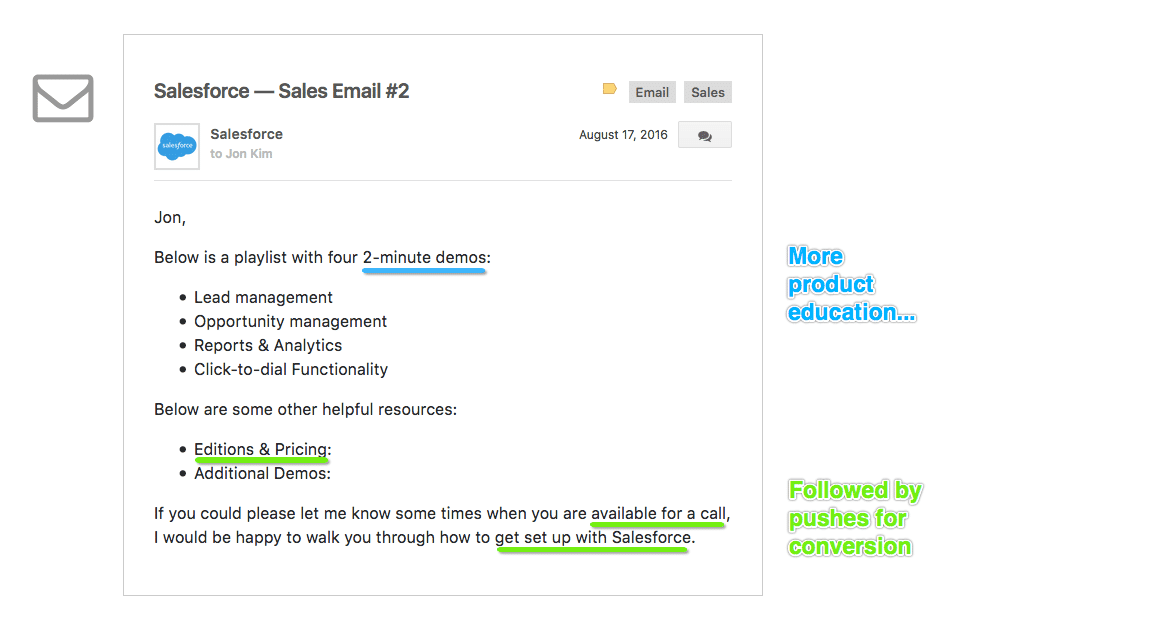

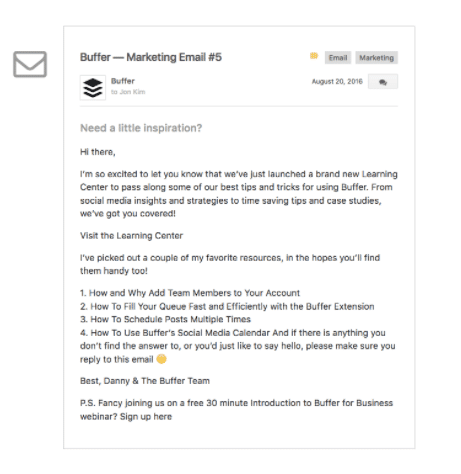
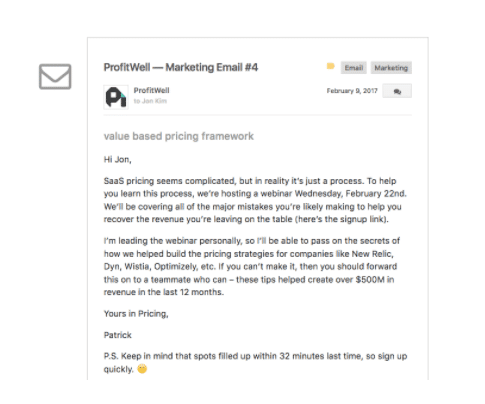



/https%3A%2F%2Fblueprint-api-production.s3.amazonaws.com%2Fuploads%2Fcard%2Fimage%2F586951%2F98ecc714-de68-49d4-b030-b12beb314acb.jpg)


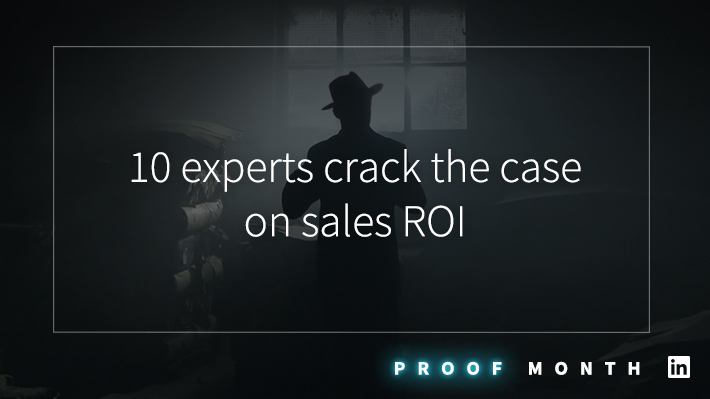



 The twist is that the site is for internal and external messaging--same channels, same content. They’re not crafting an image, they’re broadcasting their identity. The content on Gameplan A clearly says, “This is what we are like. If you’re like us, this is your community, too.” That approach makes it easier for people to connect and form a lasting relationship with the brand.
Here’s how adidas puts culture at the core of their content marketing strategy.
The twist is that the site is for internal and external messaging--same channels, same content. They’re not crafting an image, they’re broadcasting their identity. The content on Gameplan A clearly says, “This is what we are like. If you’re like us, this is your community, too.” That approach makes it easier for people to connect and form a lasting relationship with the brand.
Here’s how adidas puts culture at the core of their content marketing strategy.
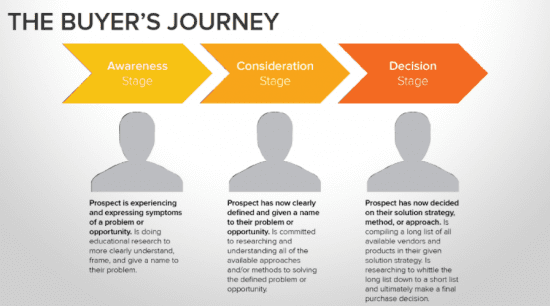
 Thanks to Victor Blasco for sharing their advice and opinion in this post. Victor is the Founder and CEO of the explainer video company
Thanks to Victor Blasco for sharing their advice and opinion in this post. Victor is the Founder and CEO of the explainer video company 





























 pronunciation but have different meanings. Be extra cautious of words like complement and compliment as they can create confusion and lead prospects to abandon your page.
pronunciation but have different meanings. Be extra cautious of words like complement and compliment as they can create confusion and lead prospects to abandon your page.




























 Having an active blog for your personal brand is an important marketing tool in which your brand can build a strong reputation and attract more leads and sales. The type of blog is essential for reaching the right target market effectively.
Having an active blog for your personal brand is an important marketing tool in which your brand can build a strong reputation and attract more leads and sales. The type of blog is essential for reaching the right target market effectively.